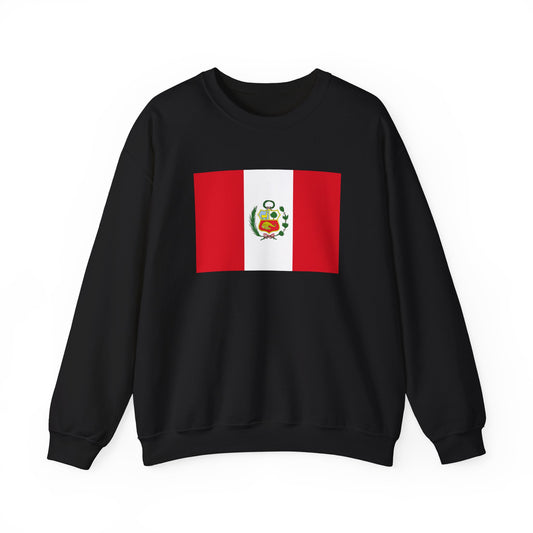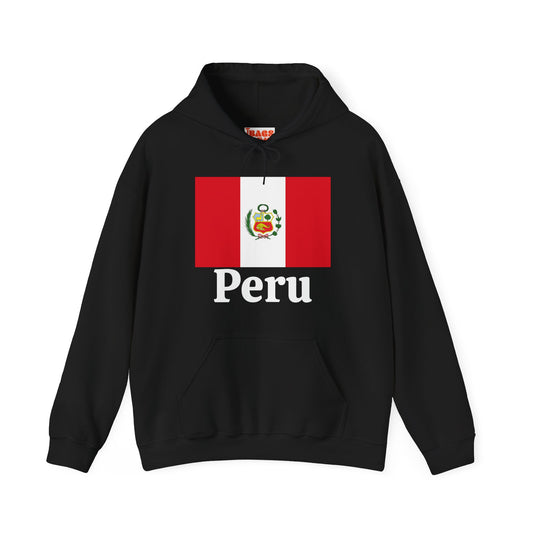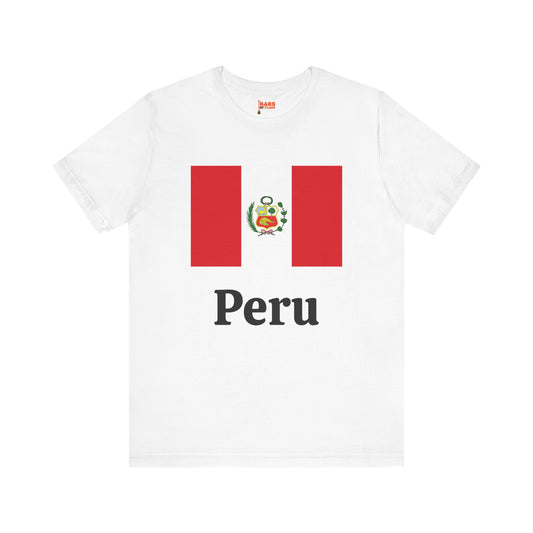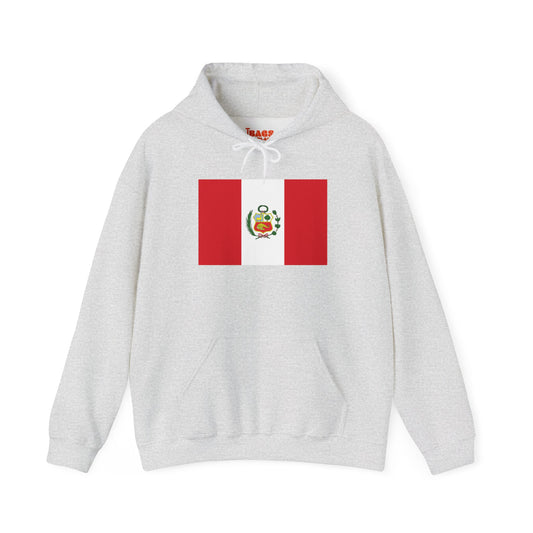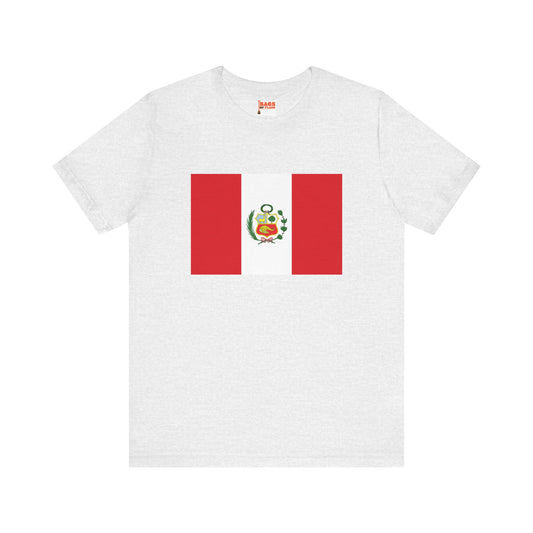-
Peru Flag Sweatshirt
Regular price $34.15 USDRegular priceUnit price / per -
Peru Sweatshirt
Regular price $34.15 USDRegular priceUnit price / per -
Peru Pillow
Regular price $22.65 USDRegular priceUnit price / per -
Peru Backpack
Regular price $59.79 USDRegular priceUnit price / per -
Peru Leather Patch Hat
Regular price $18.85 USDRegular priceUnit price / per -
Peru Hoodies
Regular price $34.40 USDRegular priceUnit price / per -
Peru T-shirts
Regular price $22.79 USDRegular priceUnit price / per -
Peru Flag on Hoodies
Regular price $34.40 USDRegular priceUnit price / per -
Peru Flag on T-shirt
Regular price $22.79 USDRegular priceUnit price / per
Collection: Peru
The Peru flag, also known as the flag of Peru, is a vibrant and culturally significant emblem that holds a rich history and symbolism. We will delve into the unique protocols and lesser-known facts surrounding the Peru flag, exploring its design, historical context, symbolism, current relevance, and additional intriguing details.

Overview of the Peru Flag
The flag of Peru consists of a distinctive and bold design, characterized by two outer red vertical stripes and a single, more prominent white stripe in the middle. This configuration creates an eye-catching contrast, underscoring the flag's significance and visual appeal. Each of the red stripes flanks the central white band, which is double the width of the reds, lending the flag a balanced and harmonious look. The standard dimensions follow a 2:3 ratio, ensuring that the flag maintains its proportions regardless of its size. Notably, the flag sometimes features the national coat of arms in the center of the white stripe. However, this version is primarily used by government officials for specific purposes. The simple yet profound color scheme and layout of the Peru flag make it instantly recognizable, symbolizing the nation's enduring spirit and the values it holds dear.
Historical Context of the Peru Flag
The inception of the Peru flag is deeply intertwined with Peru's quest for independence, a pivotal moment that shaped its national identity and legacy. Adopted on February 25, 1825, the flag has since stood as a testament to the resilience and determination of the Peruvian people. The decision to adopt this flag followed the victorious conclusion of Peru's arduous fight against Spanish rule, marking a new era of sovereignty and self-determination.
This period was marked by intense battles and significant sacrifices, which the flag's colors vividly encapsulate. General José de San Martín, a key figure in Peru's struggle for independence, is credited with proposing the red and white colors, inspired by a flock of flamingos taking flight—a sight he interpreted as an omen of liberation. Over the years, the flag has undergone minor adjustments, primarily concerning the hue of red utilized and the dimensions of its stripes. Yet, its core symbolism and design have remained unchanged.
The adoption process was symbolic of Peru's newfound unity and commitment to forming a republic reflecting its diverse heritage and aspirations. As such, the flag not only commemorates the end of colonial domination but also embodies the birth of the Peruvian nation as a free and independent state.
Symbolism Behind the Peru Flag

The vibrant red stripes of the Peru flag powerfully remind us of the sacrifice and valor of the freedom fighters who laid down their lives in the quest for independence. These stripes encapsulate the enduring spirit and bravery inherent in the Peruvian people. In contrast, the white stripe stands as a beacon of hope, embodying the aspirations for peace, purity, and unity within the nation. These colors forge a visual representation of Peru's tumultuous history and its continuous journey toward harmony and solidarity.
Including the national coat of arms in specific flag versions adds layers of profound symbolism. The vicuña, prominently featured, serves as an emblem of freedom and the indomitable spirit of the Peruvian highlands. Meanwhile, the chinchona tree, another significant element, symbolizes the wealth of Peru's natural bounty and the country's resilience. These symbols, combined with the flag's colors, weave a rich tapestry of meaning that reflects the nation's past struggles, present achievements, and future aspirations, uniting the people of Peru under a standard banner of pride and identity.
Current Relevance of the Peru Flag
Today, the Peru flag is a ubiquitous presence in the lives of Peruvians, symbolizing not just the nation's storied past but also its ongoing narrative and unity. It flies high during significant national celebrations such as Independence Day, where it serves as a focal point of patriotic pride. Beyond these grand occasions, the flag is integrated into daily life, adorning public buildings, schools, and homes, reaffirming the sense of national identity among the populace.
In recent times, the flag has also played a pivotal role in social and political movements within Peru. It is frequently seen at demonstrations, where it acts as a symbol of the people's grievances and aspirations, highlighting its role as a powerful emblem of solidarity and resistance against injustice. This has sparked debates about the meanings and implications of its symbols in contemporary contexts, reflecting the dynamic nature of national symbols in representing diverse viewpoints and social issues.
Furthermore, the flag's protocol and etiquette continue to be subjects of interest and respect. For instance, specific guidelines dictate its display during national mourning, emphasizing the flag's role in unifying the nation in times of sorrow and reflection. Through these practices, the flag remains a vital part of Peru's cultural fabric, bridging the past with the present and future, as it is cherished and revered across the country.
Additional Facts about the Peru Flag
Among the interesting protocols associated with the flag of Peru, one stipulates that when the flag is displayed vertically, the correct orientation has the coat of arms positioned on the left side, ensuring it is visually correct to observers. This orientation respects the flag's symbolism and ensures uniformity in its presentation. Additionally, a cardinal rule of flag etiquette is that the Peru flag must never make contact with the ground. This guideline underscores the deep respect and reverence that Peruvians hold for their national symbol. In instances of national mourning, the flag is flown at half-mast, symbolizing the collective sorrow and respect for the departed. During official ceremonies, the raising and lowering of the flag are often accompanied by the national anthem, a practice that further instills a sense of pride and unity among the citizens. These practices highlight the thoughtful consideration given to the flag's display, emphasizing its importance as a symbol of national identity and the shared values of the Peruvian people.


